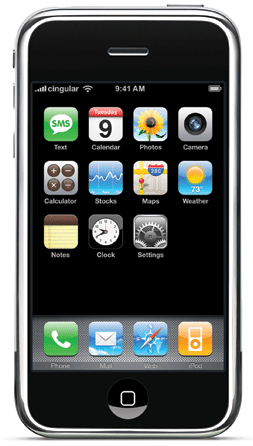
One of the things I love most is when technology and music are combined to make something incredible. The iPhone, Last.fm, MIDI controllers, and Daft Punk’s pyramid are all perfect examples of this. Lala.com has been added to that list.
Lala.com in a nutshell
Here’s the process that Lala presents for consuming music. First, you can listen to any song in it’s massive online database for free. The catch? You can once listen to each song once. Now you can either download a DRM-free MP3 for about a buck, or you can purchase the web-version of a song for 10 cents. This web version of the song is now free of the one-play restriction and is added to your library.
Now to the second aspect of Lala. Using a small standalone app, Lala will scan your music folder and unlock the web versions of every song you have. If Lala doesn’t find a match in its database, it will upload your song to the cloud. Every song you have on your computer is now available for you to stream for free unlimited times.
Your music in the cloud
If you aren’t familiar with “the cloud”, just think of websites like Gmail or Google Docs where all of your information is stored on some remote servers (the cloud) instead of your local machine. With Lala, its of your music that is in the cloud.
This currently means that you can access all of your music for free on any computer with an internet connection. While this is the main feature Lala boasts right now, the potential of this reaches much further. Lala could integrate the subscription model of services like Real Network’s Rhapsody and Microsoft’s Zune Marketplace and quickly overtake them. Lala’s current monetisation scheme seems to be working pretty well for them ($.10 or $1), but there are so many other directions they can take in the future.
iPhone app
Engadget just posted an article showing a very early build of the iPhone app Lala has in the works. Right now, mobile devices like the iPhone are limited by their data storage capacities. Because of mobile phones’ small sizes, storage is limited to around 16GBs right now. If Lala can get past the legal hurdles that the record companies present and get the web versions of songs to play on mobile apps, this storage restriction will be lifted.
I’m hooked
Lala has the potential to do everything that I want a media player to do. iTunes works well right now, but the reason I love it is because it syncs so well with my iPhone, not because of its ability to play music (and I’ve never bought music from the iTunes Store).
I believe agility will be one of Lala’s key strengths. If the company can continue to innovate the online music marketplace as it has, I see no reason why media desktop apps won’t be a thing of the past.
update: I’ve fallen in love with Lala’s “Mix it up” feature. It’s basically a playlist generator (ie. iTunes Genius), and it works great!
 For a while now, my opinion of Google has been declining. There isn’t really one big event that has caused this, but I guess it is the compilation of the following:
For a while now, my opinion of Google has been declining. There isn’t really one big event that has caused this, but I guess it is the compilation of the following: I, probably like everyone else in the world, find picturing Microsoft without Bill Gates rather hard. Bill Gates is the face of Microsoft even more than Steve Jobs is the face of Apple (the iPod is Apple’s face). But as iconic as one of the richest persons in the world is, that doesn’t change the fact that Bill Gates will be stepping down from his position as CEO of Microsoft in July to take on the full-time responsibility that the Bill and Melinda Gates Foundation demands.
I, probably like everyone else in the world, find picturing Microsoft without Bill Gates rather hard. Bill Gates is the face of Microsoft even more than Steve Jobs is the face of Apple (the iPod is Apple’s face). But as iconic as one of the richest persons in the world is, that doesn’t change the fact that Bill Gates will be stepping down from his position as CEO of Microsoft in July to take on the full-time responsibility that the Bill and Melinda Gates Foundation demands.
